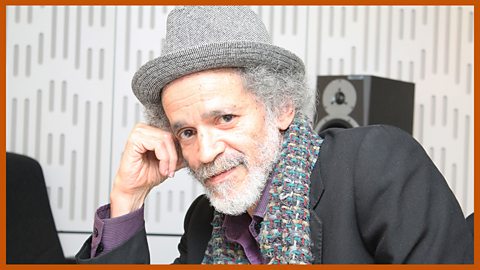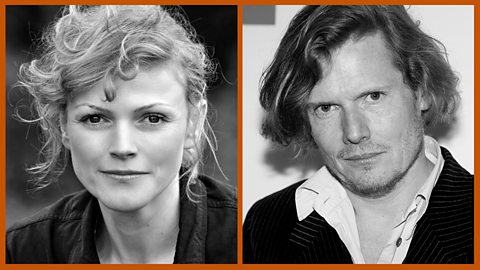ΒιΆΉΤΌΕΔ Teach > School Radio > English > Talking Poetry
Rosen - Nichols - McGough - Kay - Agard - Coe - Classic 1 - Classic 2
Duration: 15:00
The actors Maxine Peake and Julian Rhind-Tutt read a selection of classic poems:
Jabberwocky
by Lewis Carroll, read by Julian Rhind-Tutt
The Listeners
by Walter de la Mare, read by Maxine Peake
The Tyger
by William Blake, read by Julian Rhind-Tutt
How do I love thee?
by Elizabeth Barrett Browning, read by Maxine Peake
Night mail
by W H Auden, read by Julian Rhind-Tutt
The Jumblies
by Edward Lear, read by Maxine Peake

The poems
Julian Rhind-Tutt reads Lewis Carroll's poem 'Jabberwocky' (duration 01:26)
Maxine Peake reads Walter de la Mare's poem 'The Listeners' (duration: 01:47)
Julian Rhind-Tutt reads William Blake's poem 'The Tyger' (duration: 01:21)
Maxine Peake reads Elizabeth Barrett Browning's poem 'How do I love thee?' (duration: 01:03)
Julian Rhind-Tutt reads W H Auden's poem 'Night mail' (duration: 02:32)
Maxine Peake reads Edward Lear's poem 'The Jumblies' (duration: 03:26)
Curriculum guidance
There are eight programmes in this series. Each of the first 6 programmes profiles a different contemporary childrenβs poet who introduces and then reads a selection of his or her work.
The final two programmes focus on classic poetry and include a selection of well-known poems often taught at Key Stage 2. These poems are read by the actors Maxine Peake and Julian Rhind-Tutt.
Using the audio
The programmes can be used in a variety of ways. You can listen to them in their entirety or listen to and focus on one poem at a time. Students can read the text of the poem before, during or after listening to the recording and there are suggestions in these notes for pre-, during-, and post- listening activities.
Using the images:
Each programme is accompanied by a composite picture inspired by the poems in that programme. These can be used:
to stimulate pre-listening discussion about what the poems might be about;
to explore themes in the poetβs writing;
to support reading of individual poems β the image can act as a visual reminder of topics, themes or narratives for students while they are completing work on poems;
to stimulate creative writing: pupils could pick two or three elements of the picture and combine them to stimulate a story. This might work well with a βconsequencesβ story frame: a framework of actions already written where pupils add in nouns taken from the image to make a story.
More detailed guidance can be found in the Teachers' Notes below

Μύ
Μύ
More from Talking Poetry
5. John Agard. audio
John Agard introduces and reads some of his best-known poems for children, including 'A date with spring' and 'Hopaloo kangaroo'.

6. Mandy Coe. audio
Mandy Coe introduces and reads some of her best-known poems for children, including 'If you could see laughter' and 'Fizz'.

7. Classic poetry 1. audio
Maxine Peake and Julian Rhind-Tutt read a selection of classic poems, including TS Eliot's 'The Naming of Cats' and Alfred Noyes' 'The Highwayman'.

ΒιΆΉΤΌΕΔ Teach > School Radio > English > Talking Poetry
Rosen - Nichols - McGough - Kay - Agard - Coe - Classic 1 - Classic 2